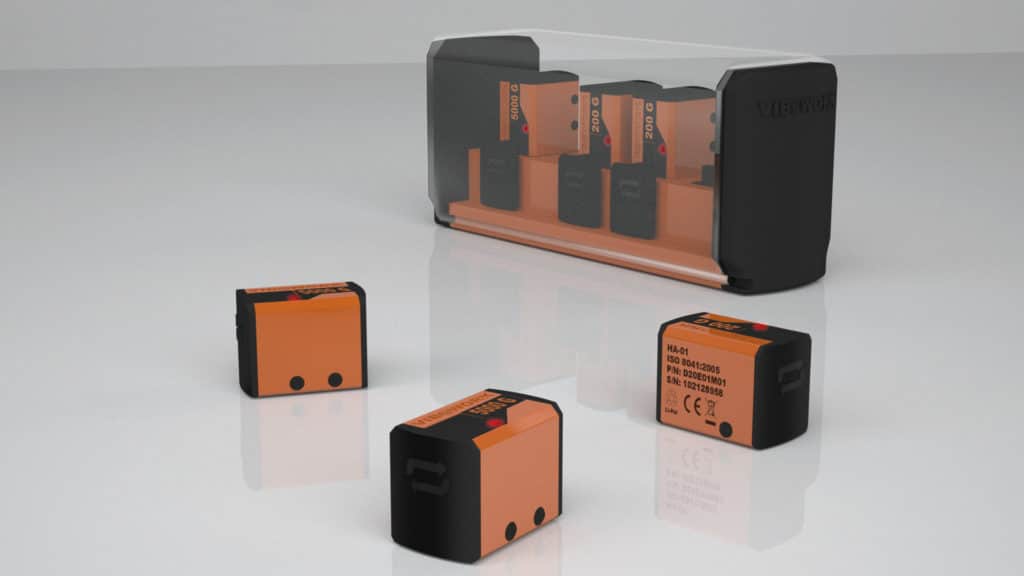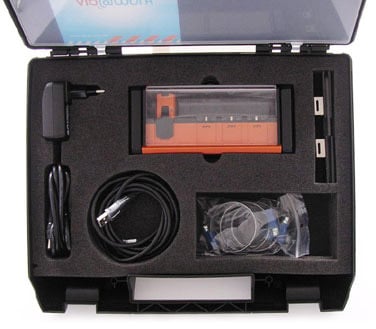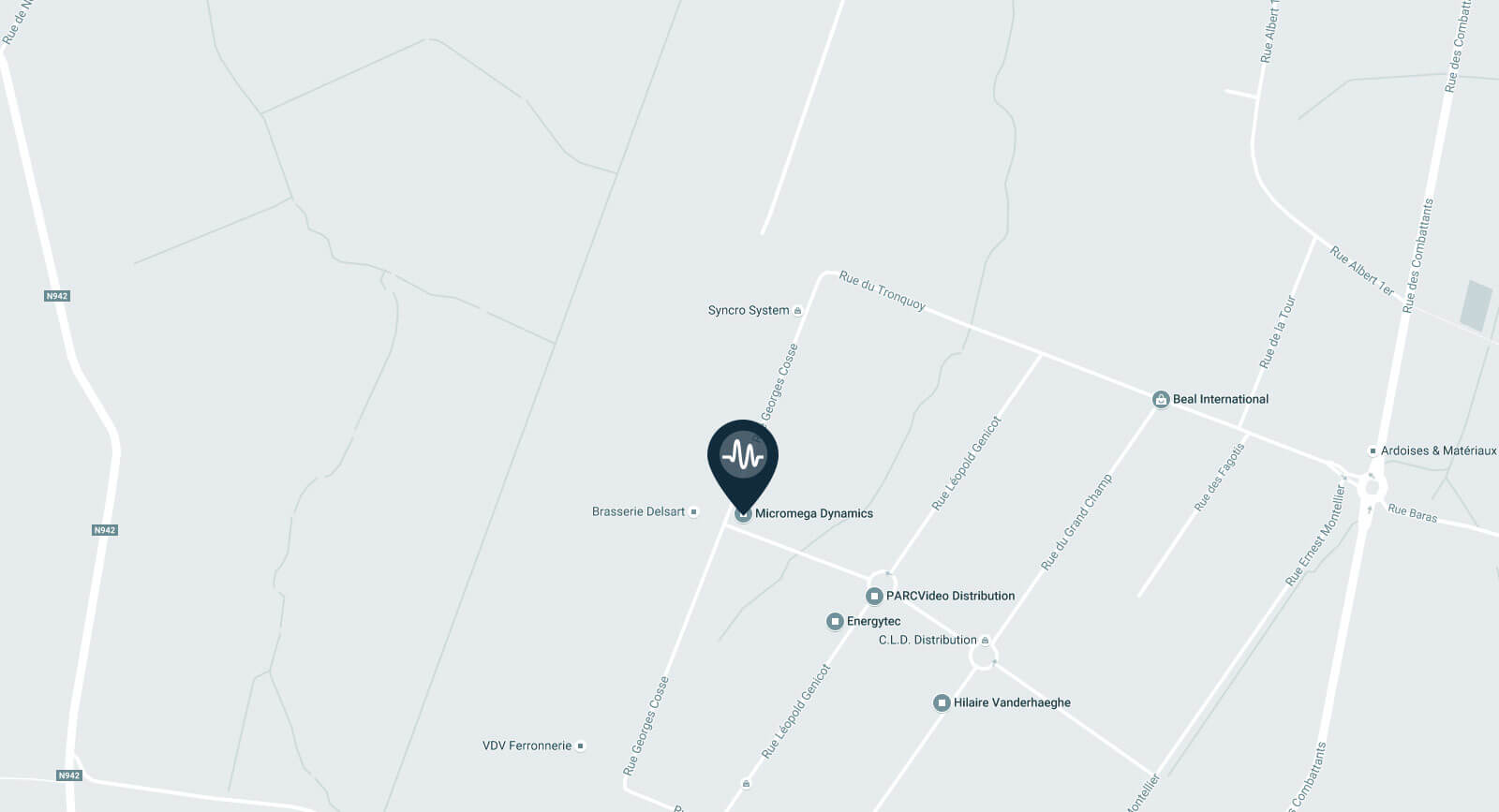 Hand-arm Vibration Testing Equipment : Vibration Dosimeters
Hand-arm Vibration Testing Equipment : Vibration Dosimeters
Our innovative measurement system allows for vibration measurements to be taken on handheld tools thanks to autonomous sensors that do not need to be wired during measurements.
Stored data is downloaded from the sensor(s) at the end of the working period using a docking station connected to a PC.
The software allows for the automatic computation and display of workers’ exposure to hand-arm vibration and indicates how such exposure compares with the limit and action values defined in the vibration Directive.
In order to cover the full range of existing handheld tools, two sensors have been developed: one for usual vibrating tools while another is dedicated to highly percussive tools that generate high levels of shock (Up to 50 000 m/s²).
Our measuring device that can be attached to any type of tool, is currently the only device capable of taking accurate vibration measurements without disturbing workers’ tasks with annoying and fragile cabling. A special version of the sensor is specifically designed for measurements on highly percussive tools.
Safety at work made easy

Features
- Self-contained miniature sensor without wired connections
- Accurate measurement on all types of handheld tools, including highly percussive tools (up to 5000 G)
- Automatic computation of standardized exposure values
- Fully compliant with the European Vibration Directive
- User-friendly implementation and use
- Includes means of avoiding common measurement errors
- Non-intrusive
- Reasonable cost

SENSOR DESCRIPTION
The sensing device is composed of a miniature case to be fixed to the tool and includes:
- A 3-axis accelerometer
- An electronic circuit acquiring, processing (weighting filters) and storing the acceleration values
- A compact battery
- A communication circuit to access stored values (not used during measurement)
- An indication of operation (LED)
The available range includes two sensors that look the same and operate identically, but exhibit different characteristics:
- The first one allows for measurements to be taken on most common handheld tools
- The second one is specifically designed for highly percussive tools (e.g. rammers, rock-drills etc.)
Models
Standard Sensor:
- Measurement range: ± 2000 m/s²
- Maximum measurement noise: 0.010 m/s²
Highly Percussive Tools Sensor:
- Measurement range: ± 50000 m/s² (1)
- Maximum measurement noise: 0.50 m/s²
(1) Sensor range (including internal mechanical filters)
Software for exposure value computation
- Windows™ software
- Access to measurements from one sensor or more using the supplied docking station
- Automatic computation and display of workers’ exposure to hand-arm vibration, and comparison with the limit and action values defined in the European vibration Directive
- Storage and export of vibration time history for further processing with analysis software (option)
Operation
The sensors are plugged into the docking station, which is connected to the PC.
These are then made ready to measure.
As soon as they are unplugged from the docking station, they can be attached to the tool(s) within a given period of time (user parameters).
At the end of the measurement period, the sensors are plugged back into the docking station.
Measurements are downloaded from each sensor and the worker’s exposure to hand-arm vibration is computed, eventually taking into account the different tools he has been using.
Measurement error avoidance
In order to avoid such phenomena, special provisions have been implemented (i.e. integrated 3-axis mechanical filter).
These provisions allow any user – whether an expert in vibration or not – to obtain accurate and consistent measurement results.
Compliance
- Fully compliant with the European Vibration Directive 2002/44/EC and related standards ISO 5349-1 and 5349-2
- Compliant with the ISO 8041: 2005 standard (Human response to vibration – Measuring instrumentation)
- Weighting filters according to ISO 5349-1
- The sensors are supplied with coupling devices for firm and stiff attachment to the tools as per ISO 5349-2
-
Developed in partnership with INRS (Research Center for Safety, France)
Provided material
In its basic version, Vib@Work Hand-Arm comes in a carrying case with a capacity of 4 sensors including:
- A vibration sensor (standard sensor or sensor for highly percussive tools)
- Sensor attachment means
- A docking station (4 sensor capacity) for charging and communication between the sensors and the software
- A communication cable between the docking station and PC (USB port)
- A charger
- A user manual
- The dose computation software on CD
 USE CASES
USE CASES
Contact Us
Need the help of an expert ?
You prefer to be called back ?
You have a question ? You need a quote ?

